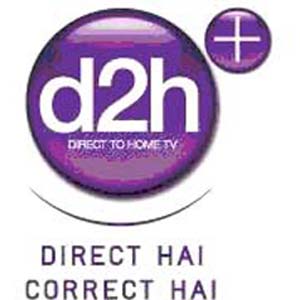Usually a broadcasting centre, satellites, encoders, multiplexers, modulators and DTH receivers make up the DTH Network . A DTH service provider has to lease Ku-band transponders from the satellite. The encoder converts the audio, video and data signals into the digital format and the multiplexer mixes these signals. From the users side, there will be a small dish antenna (which can be as small as 25 cm in diameter) and set-top boxes to decode and view numerous channels. DTH is an encrypted transmission that travels to the consumer directly through a satellite. DTH transmission is received directly by the consumer at his end through the small dish antenna. A set-top box, unlike the regular cable connection, decodes the encrypted transmission.

The way DTH reaches a consumer’s home is different from the way cable TV normally does. In DTH, TV channels would be transmitted from the satellite to a small dish antenna mounted on the window or rooftop of the subscriber’s home directly hence the broadcaster directly connects to the user. The middlemen like local cable operators are not there in the picture.
DTH can also reach the remotest of areas since it does away with the intermediate step of a cable operator and the wires (cables) that come from the cable operator to your house. As we explained above, in DTH signals directly come from the satellite to your DTH dish. DTH users can scan nearly 700 channels unlike normal Cable TV operations. DTH offers better quality picture than cable TV. This is because cable TV in India is analog. Despite digital transmission and reception, the cable transmission is still analog. DTH offers stereophonic sound effects. It can also reach remote areas where terrestrial transmission and cable TV have failed to penetrate. Apart from enhanced picture quality, DTH has also allows for interactive TV services such as movie-on-demand, Internet access, video conferencing and e-mail.

DTH services were first proposed in India in 1996. But they did not pass approval because there were concerns over national security and a cultural invasion. In 1997, the government even imposed a ban when the Rupert Murdoch-owned Indian Sky Broadcasting (ISkyB) was about to launch its DTH services in India.
Finally in 2000, DTH was allowed. The new policy requires all operators to set up earth stations in India within 12 months of getting a license. DTH licenses in India will cost $2.14 million and will be valid for 10 years. The companies offering DTH service will have to have an Indian chief and foreign equity has been capped at 49 per cent. There is no limit on the number of companies that can apply for the DTH license.
There are five serious contenders for DTH services in India which include Reliance Big TV, Tata Sky, Airtel Digital TV, Sun Direct and Doordarshan
Today, broadcasters believe that the market is ripe for DTH. The prices of the dish and the set-top box have come down significantly. Overall investments required in putting up a DTH infrastructure has dropped and customers are also reaping the benefits of more attractive tariffs.

The major thing that DTH operators are betting on is that the service is coming at a time when the government is pushing for CAS (conditional access system), which will make cable television more expensive, narrowing the tariff gap between DTH and cable.
Source : Aajkideals




0 comments:
Post a Comment